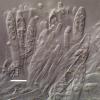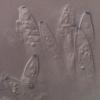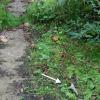
17-12-2025 18:35
 Michel Hairaud
Michel Hairaud
Bonjour à tous/Hi to everyone I am passing along

15-12-2025 15:48
 Danny Newman
Danny Newman
Melanospora cf. lagenaria on old, rotting, fallen

15-12-2025 15:54
 Johan Boonefaes
Johan Boonefaes
Unknown anamorph found on the ground in coastal sa

15-12-2025 21:11
 Hardware Tony
Hardware Tony
Small clavate hairs, negative croziers and IKI bb

15-12-2025 07:09
 Danny Newman
Danny Newman
indet. Rutstroemiaceae sp. on unk. fallen leavesMc

15-12-2025 07:05
 Danny Newman
Danny Newman
Pseudosclerococcum golindoi (det: Zotto)near Cosb

15-12-2025 11:49
 Danny Newman
Danny Newman
ITS sequences from the following two collections B

15-12-2025 12:34
 Danny Newman
Danny Newman
indet. Rhytismataceae on oak leafnear Purchase Roa
mollisioid mystery
Chris Yeates,
18-09-2018 15:33

Bonjour tous
Normally I steer clear of this daunting group, but a recent collection with abundant apothecia was too tempting.
Apothecia densely gregarious; with a margin only when very young then plane; pale grey with some turning pale yellowish-brown. No reaction to KOH. Scale bar in photograph = 1mm.
Paraphyses with no vacuolar contents - apparently completely "empty" (hence my confusion). Scale bar in photograph = 10µm.
Asci 8-spored, IKI bb, apparently with croziers; occasionally a "Psilachnum body" was observed.
Ascospores ovoid-ellipsoid, occasionally slight fusoid, guttules as in photograph. Scale bar in photograph = 10µm.
Any suggestions very welcome.
Chris
Hans-Otto Baral,
18-09-2018 16:16

Re : mollisioid mystery
Hi Chris
does the fungus also have a substrate? :-)
The living paraphyses look "empty", so logically the KOH reaction is negative.
This should be a Pyrenopeziza. The small spores appears to point to P. aquosa. That species has typically the Psilachnum-drop.
Zotto
does the fungus also have a substrate? :-)
The living paraphyses look "empty", so logically the KOH reaction is negative.
This should be a Pyrenopeziza. The small spores appears to point to P. aquosa. That species has typically the Psilachnum-drop.
Zotto
Chris Yeates,
18-09-2018 17:44

Re : mollisioid mystery
Thanks for the quick response Zotto.
Here are photo's showing the collection site. The fungus was growing on the underside of a piece of decorticated wood - I assumed, from this area of Quercus - lying at the side of a long-disused concrete track at the edge of woodland.
I had assumed Pyrenopeziza but couldn't immediately think of lignicolous ones, and of course older works still put aquosa in Mollisia.
I think P. aquosa is definitely in the right area. I have quickly looked through the long and interesting http://www.ascofrance.com/search_forum/27917 thread, where the question of "Mollisia" dextrinospora is raised. I too think Ellis and Ellis's Mollisia aquosa is something different - the marginal cells on my fungus were only slightly larger and more enlarged than the rest of the excipulum, rather like your HB 7640. By contrast E & E's fungus has distinctly elongated marginal cells.
Best wishes
Chris
Hans-Otto Baral,
18-09-2018 17:55

Re : mollisioid mystery
Yes there were some questions.....






